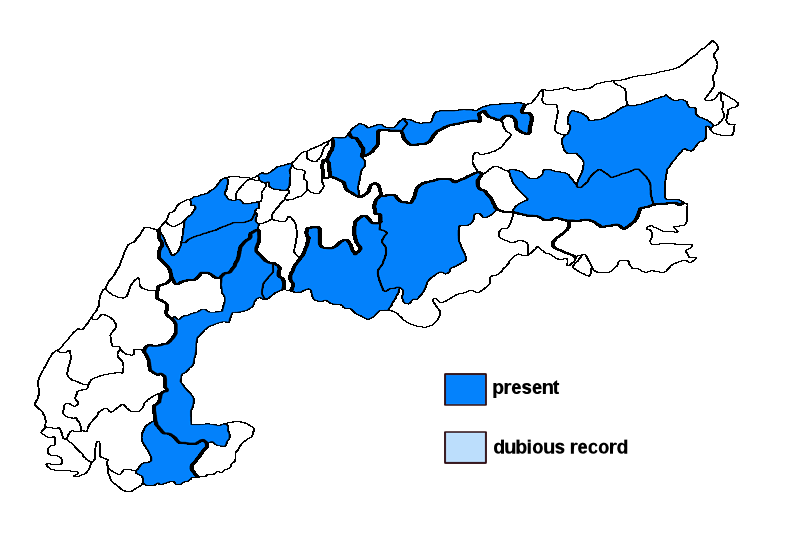Caloplaca arnoldii (Wedd.) Zahlbr. ex Ginzb. subsp. oblitterata (Pers.) Gaya
Syn.: Caloplaca discernenda (Nyl.) Zahlbr., Caloplaca miniatula (Nyl.) Zahlbr., Caloplaca murorum auct. f. miniatula (Nyl.) Ozenda & Clauzade, Caloplaca murorum auct. var. oblitterata (Pers.) Jatta, Caloplaca pyraceoides B. de Lesd., Caloplaca saxicola (Hoffm.) Nordin subsp. oblitterata (Pers.) Clauzade & Cl. Roux, Lecanora discernenda Nyl., Lecanora miniatula Nyl., Lichen oblitteratus Pers.
Lichenised.
Substrate: siliceous rocks, intermediate rocks (such as calciferous schists)
Altitudinal range: from the montane belt (potential vegetation: deciduous forests dominated by Fagus sylvatica and closed coniferous forests with Picea abies) to the subalpine belt (potential vegetation: open, taiga-like forests dominated by Larix decidua and/or Pinus cembra and Rhododendron)
Note: a very polymorphic taxon (see Roux et coll. 2014) with a mainly temperate to boreal distribution in Europe, also known from the Southern European mountains, most frequent on base-rich siliceous rocks or on decalcified calcareous rocks, usually in nutrient-poor stands, both on vertical cliffs and overhangs, and on horizontal surfaces of siliceous boulders; especially the southern populations seem to prefer rather shaded conditions.
Austria: Vorarlberg; Kärnten; Steiermark; Germany: Oberbayern; Schwaben; Switzerland: Bern; Schwyz; Valais; France: Alpes-Maritimes; Italy: Trentino Alto Adige; Lombardia; Piemonte;





